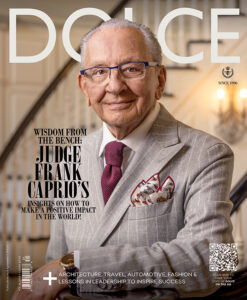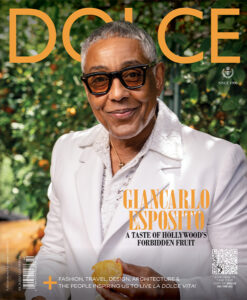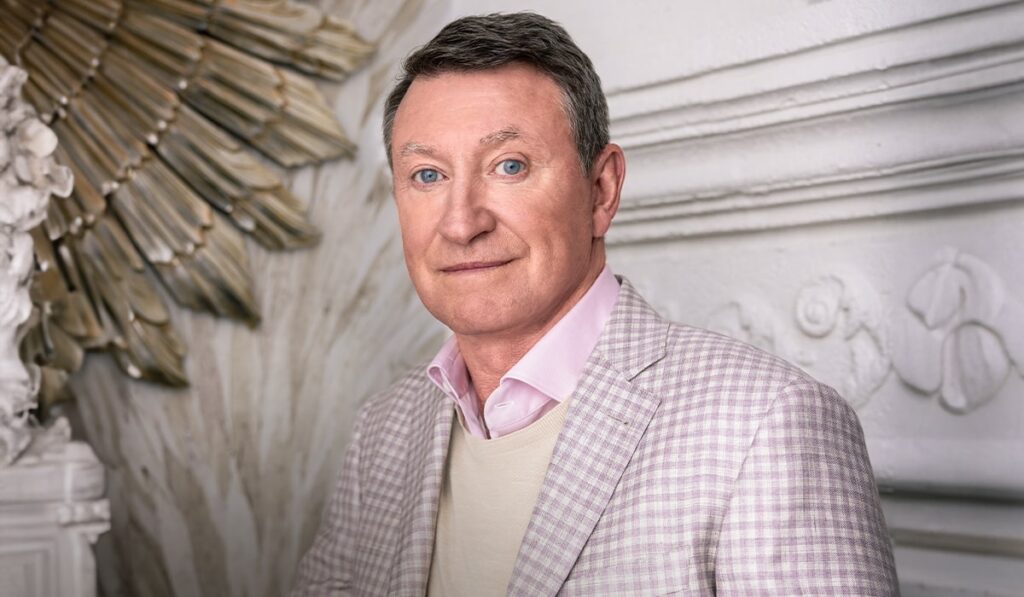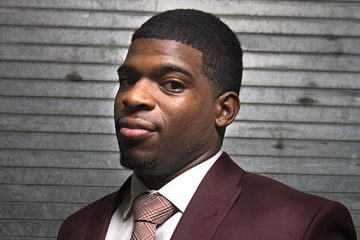Wayne Gretzky: Historic Greatness
In an exclusive interview with Dolce, Wayne Gretzky reflects on family, friends, life and the game he changed forever.
On Thursday, September 28, 1972, the entire country of Canada was basically closed, completely shut down — not because of a natural disaster, power outage or massive workers’ strike, but because of a hockey game being played many times zones away, in Moscow. It was Game Eight in of the 1972 Summit Series between Team Canada and the Soviet Union.
The series pitted the Soviet Union’s amateur players, who had ruled Olympic hockey for decades, in a first-time match-up against the Canadian professional players who made up the majority of the National Hockey League, generally regarded as the best players in the world by far. It was the most famous hockey series to date and has never been surpassed.
Most experts had predicted a Canadian sweep of all eight games, a blowout. How could a rag- tag group of unskilled amateurs possibly prevail against the best-of-the-best Canadian players? From Canada, which had invented and owned hockey? However, in the days before the Internet, the Canadian coaches and players had no idea that they were about to play a group of highly conditioned athletes who trained together year- round, were in peak physical shape and never stopped perfecting their game. At Team Canada’s training camp at Toronto’s Maple Leaf Gardens that summer, prior to the start of the series, the dressing room had ashtrays.
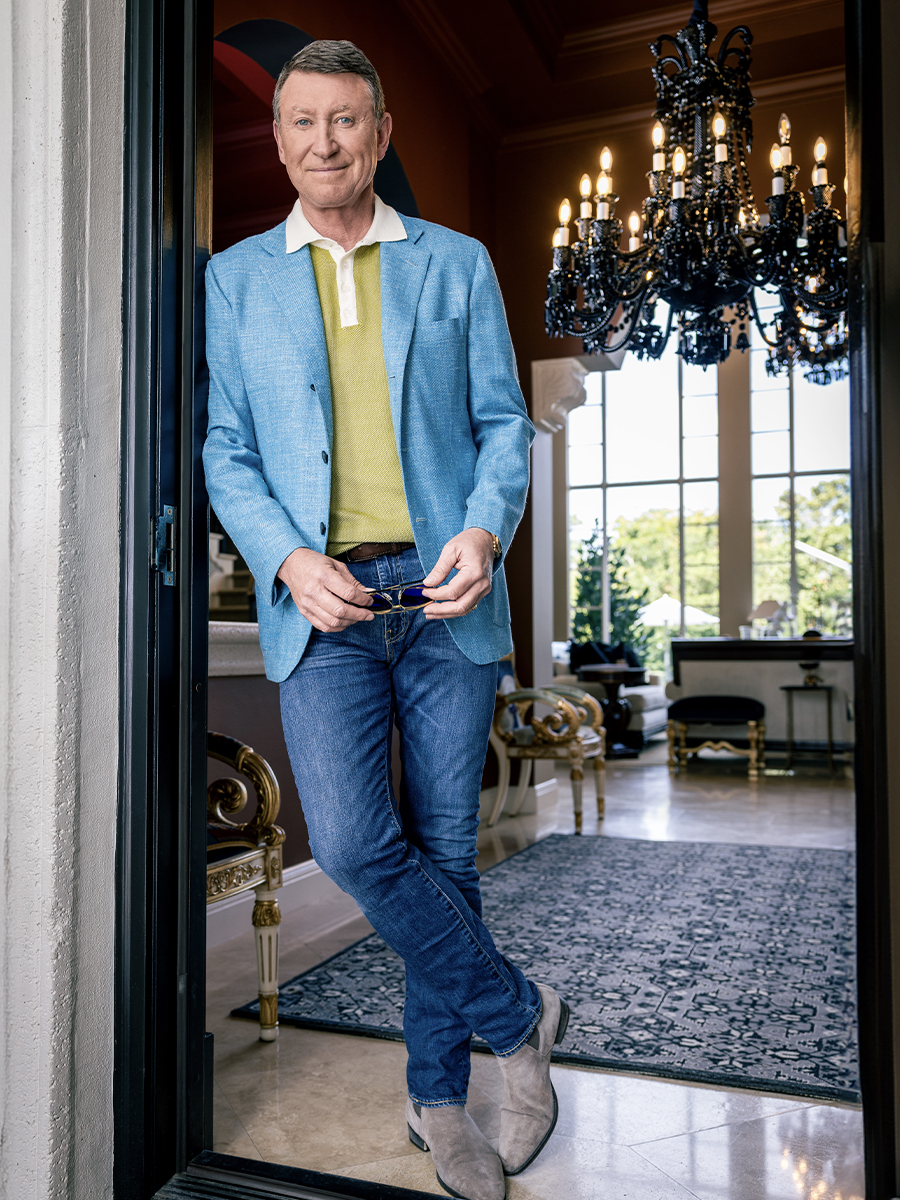
The Soviet’s 7–3 victory in the opening game in Montreal shocked the nation. This was the height of the Cold War — this was not just a game, it was “our” system against “their” system, and our system was humiliated. Team Canada was booed off the ice following a loss in Game Four in Vancouver, but summoned internal resolve, strength and love of country to eventually force a deciding Game Eight in Moscow, which Canada won 6–5 with a goal by Paul Henderson with just 34 seconds remaining. The whole country had stopped on September 28, 1972, held its breath — and then erupted in euphoria.
With apologies to Sidney Crosby’s Olympic “Golden Goal” in Vancouver in 2010, Henderson’s goal was the most important goal ever scored in Canadian hockey history and was seen by the eyes of almost every Canadian. A pair of those eyes belonged to an 11-year-old kid in Brantford, Ontario, named Wayne Gretzky.
The Soviets had taught Canada a new way to play the game they’d thought they owned — wide open, constant motion, pinpoint passing and a circulatory style — that made a lasting impression on Gretzky and would influence his own style of play. Gretzky was a budding legend already, even at that young age.
“Somebody the other day, asked me if anyone in my house ever calls me ‘The Great One’ and I said no, we never talk about that.”
He’d first learned to skate at just 2 1/2 years old, on the river behind his grandparents’ house near Paris, Ontario. He showed such natural talent for hockey that he made a team of 10-year-olds when he was just 5, at an age when most of us were learning how to tie our shoes. The team sweaters for the 10-year-olds were far too large for young Gretzky, so he compensated by tucking sweater into his pants on the right side, a tradition he continued throughout his professional career.
Five years later, at just 10, he scored a ridiculous 378 goals in a single season. That caught the attention of John Herbert, a newspaper writer in London, Ontario, who then wrote an article about him. Herbert thought Gretzky needed a nickname, as was common in hockey: Gordie Howe was “Mr. Hockey,” Bobby Hull was “The Golden Jet.” Herbert decided to call Gretzky “The Great One,” and it stuck.
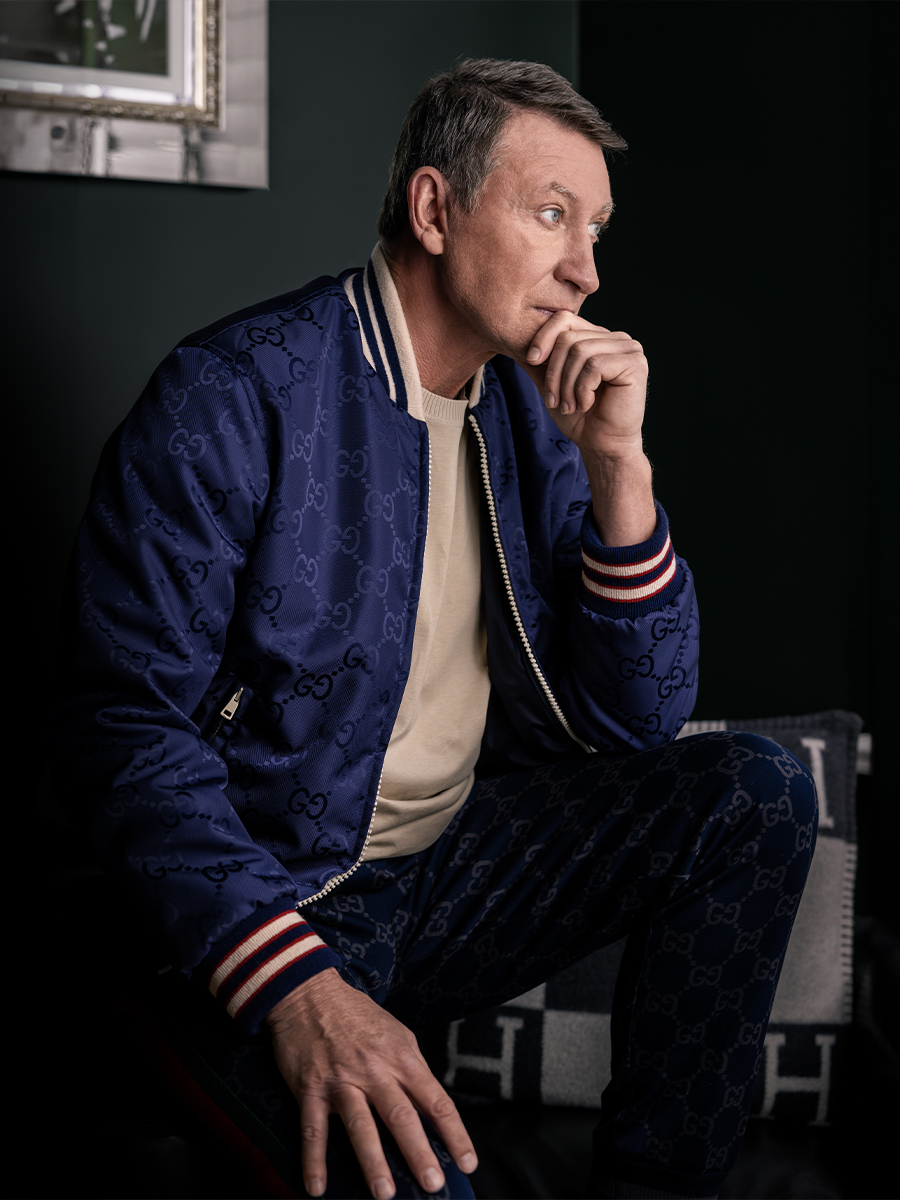
“That nickname always kind of bothered me,” said Gretzky during a recent exclusive interview with Dolce at his home in Palm Beach, Florida. “One thing you learn as a team player is that no one is bigger than anyone else in the locker room and, just as important, nobody is bigger or better than who you are competing against. Somebody the other day asked me if anyone in my house ever calls me ‘The Great One’ and I said no, we never talk about that.”
Gretzky and his wife Janet’s home in Florida has a warm, family-first vibe and is adorned with beautiful family photos of their parents, their five children and five grandchildren. The two met when Janet Jones was an actress and Wayne was serving as a judge on the television show Dance Fever. According to Gretzky, however, Janet doesn’t recall him being on the show. Great One or not, spouses have a way of keeping you grounded that way. Their marriage in Edmonton in July 1988 was dubbed “Canada’s Royal Wedding” and was broadcast live across the nation.
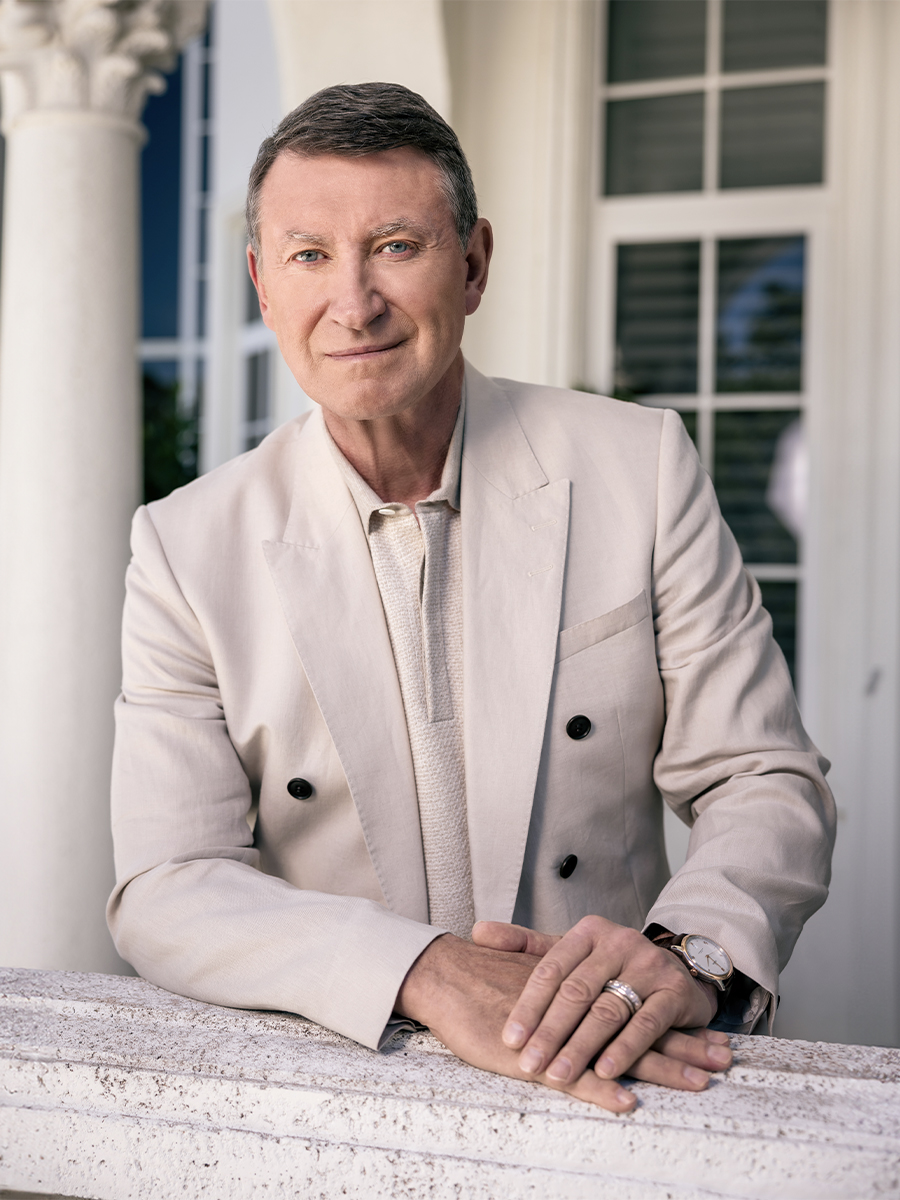
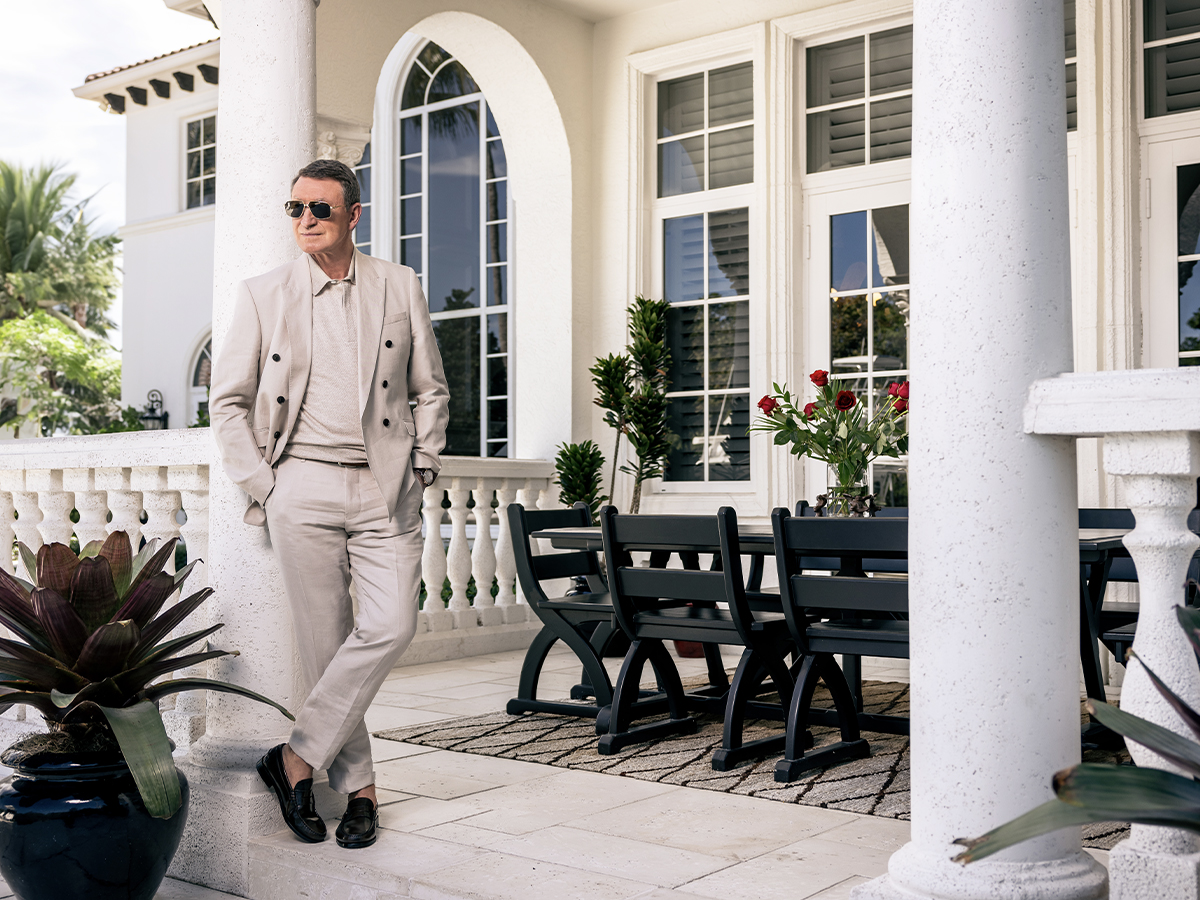
Gretzky’s professional career had begun ten years earlier, in 1978, when, at 17, he signed with the Indianapolis Racers of the World Hockey Association (WHA). He joined the Edmonton Oilers when the WHA merged with the National Hockey League (NHL), leading them to four Stanley Cup championships. But in 1988, just two hours after the Oilers had won that fourth Stanley Cup, Gretzky learned from his father that he was being shopped around because the team’s owner, Peter Pocklington, needed money to cover some failing business ventures, and in a seismic, shocking move, Gretzky was soon traded to the Los Angeles Kings.
While “The Trade” was devastating to Canada and to Edmonton in particular, Gretzky’s presence in Los Angeles made hockey a hit there and led to NHL expansion in the southwest United States. The Mighty Ducks of Anaheim, the San Jose Sharks and Arizona Coyotes franchises can all be directly attributed to the new popularity of hockey because Wayne Gretzky came to Los Angeles.
Before he arrived, you could stop ten Americans on the street and very few could name a single hockey player. After joining Los Angeles, every one of them would answer “Wayne Gretzky!” Hollywood celebrities flocked to Los Angeles Kings games as it became the hottest ticket in town. After going on to play stints with the St. Louis Blues and New York Rangers, #99 eventually retired in 1999.
‘‘The greatest thing about team sports, and especially hockey, is that you can learn so much about life.”
Gretzky did things fast as a player. As if scoring nearly 400 goals in a single season as a kid hadn’t been enough, he scored his first professional goal in 1978 at 17 — he had been sold to the Oilers by the Indianapolis Racers the previous day — and scored his second only four seconds later. When he retired, he held 61 NHL records: 40 regular season records, 15 playoff records and six All-Star records.
Gretzky is the leading career goal scorer, assist producer and point scorer in NHL history. In fact, Gretzky has more career assists than any other player has total points. His numbers are hard to get your mind around, but to put his totals into some perspective, his career accomplishments were akin to Secretariat winning the 1973 Belmont Stakes by 31 lengths.
Of his many records, there is one he is most proud of, one that he achieved in the 1981–82 season.
“Just to be able to play in the NHL is an honour and a privilege, and I say that to young kids all the time,” said Gretzky. “But if I had to choose one record, it would be the one I think is going to be the hardest to break — 50 goals in 39 games. I scored 12 goals in the final three games of that streak.”
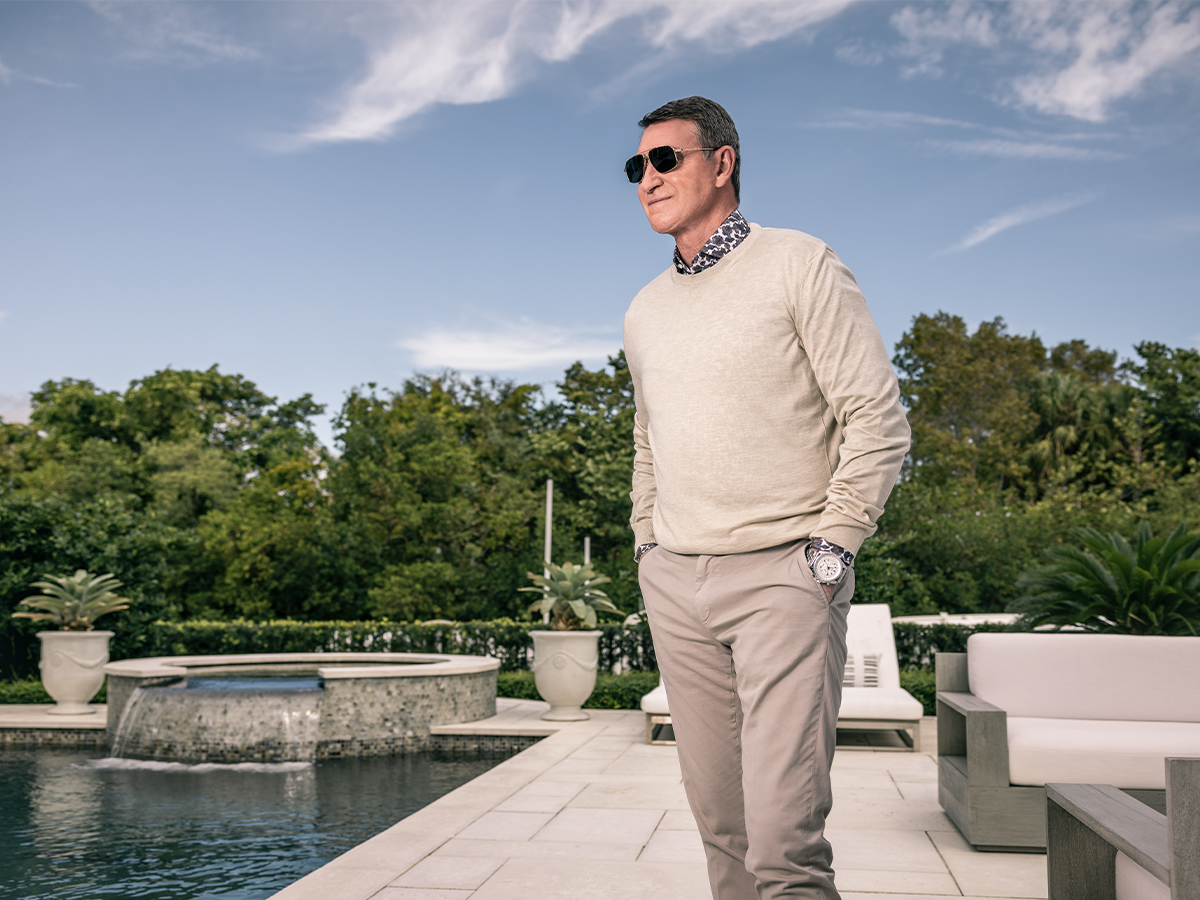
Gretzky was not the biggest or strongest or fastest person to ever play hockey — in fact, he was somewhat undersized. But the argument could be made that he was the smartest. As with Gordie Howe or Bobby Orr before him, it quickly became evident early in his professional career that hockey was being visited by a special talent. Besides his considerable skills and agility, he was a magician on the ice and it was his sense of anticipation that set him apart. Famously, he skated not to the puck, but to where the puck was going to go — a tip his father had once given him and a technique he’d seen the Soviets employ in that 1972 Summit Series.
He was a generational talent who was paying attention to a new way of playing. He set up plays from behind his opponents’ net, a space that quickly became known as “Gretzky’s office.” Perhaps overlooked was the accuracy of his shot. When he scored his record 92 goals in a single NHL season, he did so on just 369 shots. And just as he learned from Howe and Orr, players after Gretzky including Crosby and Mario Lemieux adopted his style of play, which led to the dramatic rise of the NHL skill level, as evidenced by today’s superstars such as Connor McDavid and Auston Matthews.
While he watched and learned from players who came before him, the greatest influences in his own life were off the ice — his parents, Walter and Phyllis. They came to every practice and they came to every game, just as they did for Wayne’s three brothers and his sister.
“Just to be able to play in the NHL is an honour and a privilege —I say that to young kids all the time.”
“My dad always said whether you are male or female, really talented or just talented or just have a love for it, the greatest thing about team sports, and especially hockey, is that you can learn so much about life,” he recalled. “You learn how to be unselfish; you learn how to be committed, you learn how to work hard, you learn what it’s like to lose and be devastated and you learn what it’s like to win and be excited. But most importantly, it keeps kids out of trouble by playing and participating.”
Made a Companion of The Order of Canada in 2009, Gretzky has also had multiple successes in various business ventures since his playing days ended, including as a sports owner, coach, on-air analyst during Turner Sports’ NHL coverage and co-owner of a winery, Wayne Gretzky Estates, in Niagara-on-the-Lake, Ontario. In March, Gretzky was one of six people chosen to deliver a eulogy at the funeral of former Canadian Prime Minister Brian Mulroney, evidence of his enduring stature in his homeland. It is a success that some athletes have difficulty achieving when transitioning back into the real world after their professional careers come to an end.
“My biggest advice to athletes is what I always told them — when you are playing be a player. That’s your priority, that’s your commitment, that’s your focus,” counselled Gretzky. “With that comes a responsibility to help people who are less fortunate. The other thing I tell them is don’t believe you’re as good at what you’re doing after hockey as you were as a player and make sure you surround yourself with good people. I’ve had professional partnerships with people for 25 years.”

Despite all the accolades and successes, Gretzky’s definition of la dolce vita, the sweet life, has nothing to do with records or championships won. “That’s easy for me — family,” Gretzky quickly responded. “I’m so lucky. I’ve got a great wife, five wonderful kids, five beautiful grandchildren. The greatest compliment you can get as a parent is when someone comes up to you who you don’t really know or wasn’t around your kids when they were growing up and they say, ‘I met your son, or your daughter, and they are so polite and so nice.’ That’s the greatest compliment you can get as a parent and for me, that’s the greatest thing in life.”
World sports are famous for bar arguments, debates over who was the greatest ever. In football was it Pele, Renaldo or Messi? Borg, Federer or Nadal in tennis? Hamilton or Schumacher in F1 racing? Jack, Arnie, Tiger or Rory in golf? There is no such argument in hockey — it’s Wayne Gretzky. Most notably, it may always be Gretzky. You won’t win any arguments offering any other name and your pals will give you a strange look if you do.
Few things are certain in our world but without question, decades from now, when young Canadians hear the name “Wayne Gretzky” they will want to learn more. His is an enduring legacy. He may not have cared for the nickname The Great One, but that is how he will always be remembered. Perhaps, someday, it might grow on him?
CREATIVE DIRECTOR: FERNANDO ZERILLO
EDITOR-IN-CHIEF: MICHELLE ZERILLO-SOSA
PHOTOGRAPHER: JESSE MILNS
VIDEOGRAPHER: DOMENIC EASTER
ASSISTANT/GIMBAL OP: JOELLE MCNEIL
GROOMER: MELISSA DORVIL
FASHION & WARDROBE STYL IST: ASHLEY GALANG



